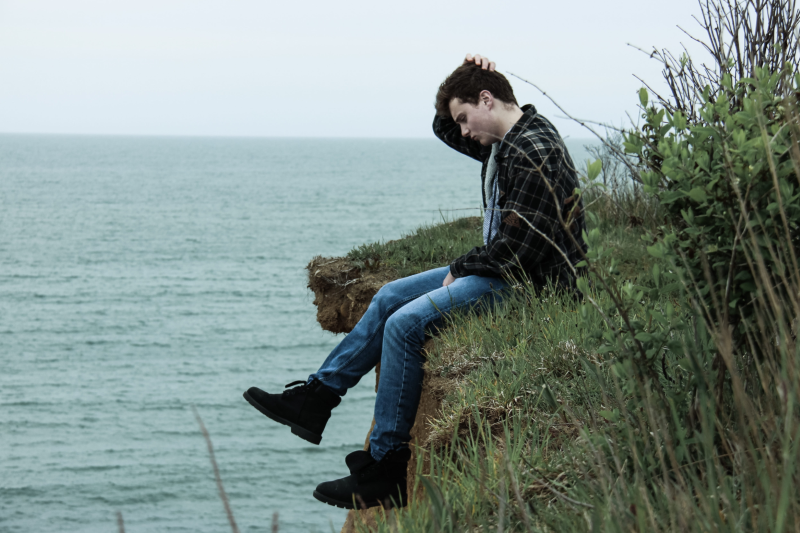
Research shows the human brain can only handle a certain number of social relationships. So why don’t I spend my time on the ones that matter the most?

By Neha Gajwani
Entrepreneur and author
As a teenager, I put all of my black clothes in two drawers because they didn’t fit into one. My friend Polly correctly pointed out this strategy was stupid—how would I find what I needed in the lump of black clothing?
Many years later, following the advice of “tidying up” expert Marie Kondo, I sat in the middle of tall, mostly drab piles of my clothes. What sparks joy? I asked myself, repeating Kondo’s trademark question. I held up each piece of clothing for a few seconds and considered what I felt. Sometimes I didn’t really care about the clothing, other times I felt hungry, but occasionally I felt a bright lift in my mood and at the edges of my mouth.
In the end, I kept six pairs of pants, five skirts, 11 shirts, eight dresses, and five pairs of workout clothes.
To my surprise, I felt lighter.
Usually, I get excited about more clothes, more restaurants, more Instant Pot settings. I choose things from blaring e-commerce ads and food from endless Yelp reviews. Each of these choices weighs me down with the clear message: I don’t simply have to choose—I have to choose correctly.
Less choice feels like relief. It’s a slightly lighter burden each morning, even with a small decision like what to wear.
I wondered whether I could apply this idea of less elsewhere. My enthusiasm for more means I also get excited about the possibility of more friendships and more dating choices. More friendships mean less time to focus on each person. More dating choices mean I often give each person less of a chance. More makes it harder to choose people and easier to leave them.
So, would it be crude to only hang out with people who bring me joy? Could I think about someone and see whether the edges of my mouth lift?
I’ve felt an obligation to keep in touch with my friends, and I’ve sometimes felt pressure to respond to this old co-worker and that friend’s uncle’s ex-wife because I’ve assumed that is how we feel connected—by responding to everyone, by being nice.
I’ve assumed it’s polite to accept invitations and I consider myself polite. But because of this, I end up in relationships of convenience (she goes to my gym class), routine (I’ve been hanging out with him for a long time), and obligation (I should really see them—they’ve been asking to hang out).
When I do see these people, I get caught up in “How have you beens” and “It’s so good to see yous.” I am actually interested in how they’ve been, and it is actually good to see them, but I often leave with a tennis-ball-sized hole in my chest, craving more intimacy.
My Facebook profile shows I have 1,076 friends. But some are people I met briefly 15 years ago and haven’t spoken to since. I know a lot about a lot of people but sometimes I feel like I’m lost in the middle of tall piles of mostly drab interactions.
It’d be nice to tidy up.
I came across research that backs this up—it shows we can only maintain relationships with a limited set of people. Anthropologist Robin Dunbar discovered this number was about 150—dubbed “Dunbar’s number.” This is the number of people a human brain can know based on the size of our brains. Dunbar has shown that this number has held through history and across cultures and shows us the limits of our brains.
One hundred fifty is the average number of Christmas cards people send out, it’s the average number of people in a company before communication deteriorates, and it’s the average number of people in a basic military unit, just to use a few examples.
To be fair, this is an impressive limit. With 150 people, you potentially have more than 10,000 relationship pairs to consider. How does each person relate to each of the others and to you? Each relationship is complicated. When we talk to someone, we evaluate their likes and dislikes, their humor, their past and future to choose the right things to say. Knowing and processing data about 150 people is remarkable.
Dunbar then breaks these 150 people into four categories:
- 100 are acquaintances
- 35 are an extended circle of friends
- 10 are close friends
- Five are people who can help you get out of a bind
Of course, these numbers aren’t exact—they are approximations. We each have different social needs dictated by our individual biology and the culture that surrounds us. But Dunbar estimates that we seek advice, money, and comfort from three to five people in that closest circle. These are people we can rely on, not necessarily the ones who bring joy.
I started to think about someone in my closest tier: Polly. She’s sort of joked that I’m researching social connection for my book but won’t return her calls. I’m ashamed to admit that she’s right. I think of Polly as someone who will always be there. Not that I think she has nothing better to do—she’s a radiologist and a mother of two. Woman’s busy.
But Polly and I go way back. When we were teenagers, we’d spend a few hours on the phone every day. We both marvel at this. What could we have spent more than 15 minutes talking about? Our lives were staggeringly boring. Sometimes we sat on the phone in silence, while messaging each other on our computers, focused and excited, as if we were on the cusp of eradicating poverty. (We were actually just listening to Weezer.)
When I got into arguments with my parents, Polly would explain my side to them. In the least suspenseful run-away-from-home story ever, I left to go to Polly’s house, but much to my dismay, I alarmed no one. My parents didn’t call because they knew where I’d go.
But Polly’s got kids now. A husband. A job. We live 2,500 miles apart. She still makes time to call me but sometimes I see my relationship with her as so enduring that I don’t need to maintain it.
I reason she won’t take it personally if I don’t call her back. That friend from the gym might though. So, I talk to Polly once a month, and I spend my social time keeping up with everyone else. I call the gym friend, exchange “How have you beens” and “It’s been so longs” and end the call craving more intimacy. But when I pick up the phone to call Polly, she gives me the connection I search for in the other relationships I keep up with.
Fewer does feel lighter—with clothes and people. But joy isn’t a strong enough metric for choosing friends to spend time with. Polly and I haven’t sparked joy in every moment of our friendship. We’ve made each other cry and we’ve both said the kind of thing that fills you with nauseous regret the next day.
Regardless of any joy, though, I can still run away to her house and she can still run to mine. She can call me out when I have stupid ideas about closet organization or when I don’t prioritize one of those five people in my closest circle. The next time I have a choice to answer her call or one from my gym friend, it won’t be a debate. I’ll choose Polly.
Originally published by Yes! Magazine, 02.19.2019, under a Creative Commons Attribution-NonCommercial-NoDerivatives 4.0 International license.





